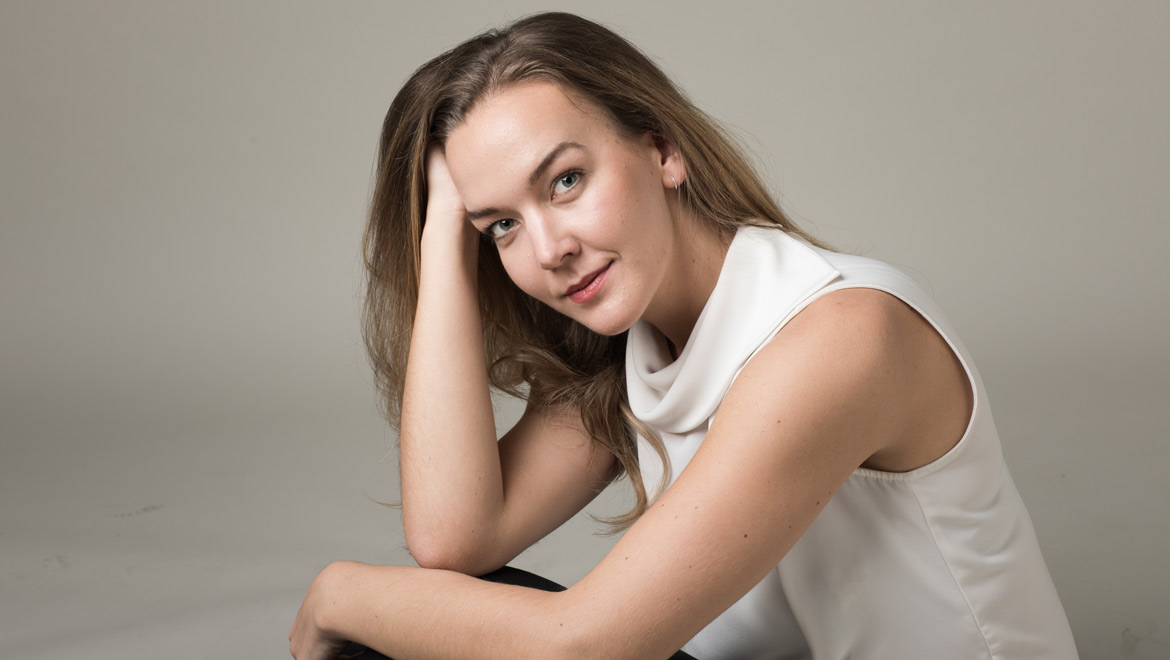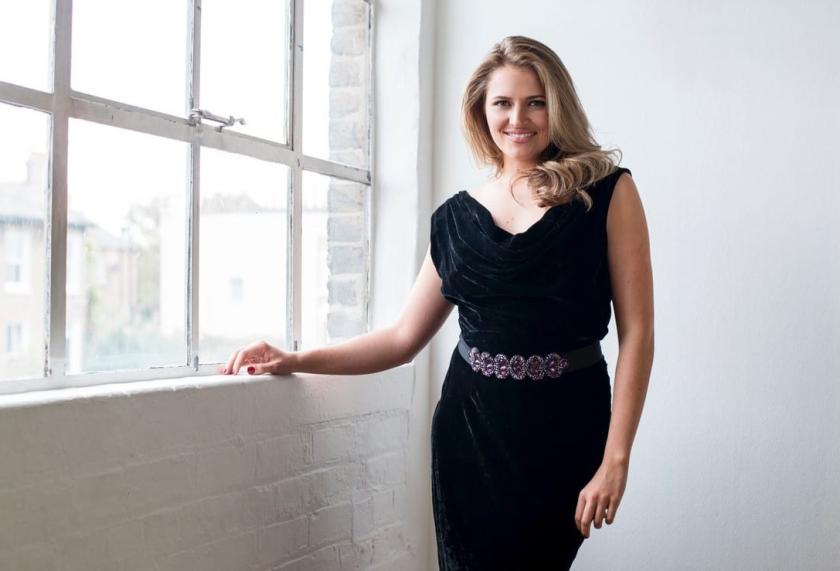Assuming the world holds together that long, there will be something we can rely on annually all the way to 2041, the 250th anniversary of Mozart's death: among the celebrations each year, a Wigmore Hall concert like this one, placing Amadeus among the other composers of his time, great and small(er). For very occasion we'll trust the brilliant Ian Page to assemble a crack team of players and to introduce us to new voices of outstanding quality.
Last night it was the turn of soprano Samantha Clarke, not long graduated from the Guildhall School, taking its 2019 gold medal, and flagged up here as a promising newcomer in our "Best of Year" column for 2018, alongside mezzo Ida Ränzlöv (pictured below by Benjamin Ealovega), already a member of Stuttgart Opera. Some thought Ränzlöv a bit cool, though the way lustrous, impassioned mezzo tone gradually emerged from what initially sounded like a lighter, sopranoid voice in classic Gluck arias from Paride ed Elena (Paris and Helen) simply suggested that she is taking time to emerge in full stage confidence.
Which Clarke already has in spades: living the text, relishing the humour of arias from what could be stock minxes in Haydn operas - the teasing Grilletta in Haydn's Lo speziale (The Apothecary), the metre-slipping commoner Lesbina playing an aristocrat in Le pescatrici - and sensitive to her colleagues, above all to the horn obbligato of Gavin Edwards, a total star of a Mozartists concert last year, in "Lungi da te" from the opera with which the 14-year old Mozart finally arrived in 1770, Mitridate, re di Ponto; their short cadenza together was a delicious highlight of a totally pleasurable evening.  So 1770 it was in the Mozart 250 project's sixth year. The symphonies placed alongside the arias and duets were especially fascinating last night: an agitated E minor specimen, one of a hundred by Bohemian Johann Baptist Vanhal and a fully acid, lean and hungry Sturm und Drang mini-masterpiece by Johann Christian Bach (Op. 6 No. 6 in G minor). Vanhal's Minuet was strikingly plaintive, its contrasting trio beautifully capped by James Eastaway's luminous oboe tone; Bach surprises us by sticking to a minor key even in his Andante (più tosto adagio), while frills and sighs were quickly dispelled by the Mozartists' vivid bite in the outer movements. Nuances in dynamics and phrasing were outstanding, as always under Page. The encyclopedic knowledge of the period in his programme notes, which make every concert booklet collectable, gave us a special nugget here: Vanhal, Haydn and Mozart played string quartets with Mozart (and Dittersdorf) for a gathering in the mid-1780s.
So 1770 it was in the Mozart 250 project's sixth year. The symphonies placed alongside the arias and duets were especially fascinating last night: an agitated E minor specimen, one of a hundred by Bohemian Johann Baptist Vanhal and a fully acid, lean and hungry Sturm und Drang mini-masterpiece by Johann Christian Bach (Op. 6 No. 6 in G minor). Vanhal's Minuet was strikingly plaintive, its contrasting trio beautifully capped by James Eastaway's luminous oboe tone; Bach surprises us by sticking to a minor key even in his Andante (più tosto adagio), while frills and sighs were quickly dispelled by the Mozartists' vivid bite in the outer movements. Nuances in dynamics and phrasing were outstanding, as always under Page. The encyclopedic knowledge of the period in his programme notes, which make every concert booklet collectable, gave us a special nugget here: Vanhal, Haydn and Mozart played string quartets with Mozart (and Dittersdorf) for a gathering in the mid-1780s.
Duets ended each half: not perhaps J C Bach's or Mozart's best, but the final flourish of "Se viver non deggio", another taster for the full Mitridate to be performed later this year, really did crown the evening. It starts with identical lines traced by each soloist, which with Ränzlöv in full flight allowed the best contrast between her lustrous mezzo and Clarke's ideal lyric soprano, and fleshes out textures with the orchestral stars of the evening, the horns and the oboes. Pleasures assured, then, not just for the entire opera but for a weekend of Cadogan Hall concerts in March during which Clarke, confirmed now as the complete artist in 2020, will be reappearing.















Add comment